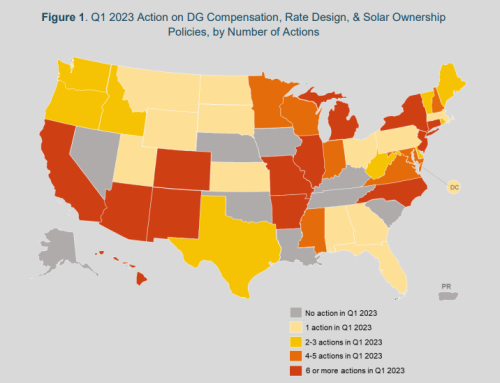Video Transcript
Hi everyone! I’m AJ Brockman, Nania Energy Advisors’s Content Marketing Manager. For today’s Two-Minute Tuesday, I’m going to be talking with Senior Energy Advisor Calvin Cornish.
With the effects of COVID-19 and everything else that’s going on right now, suppliers are starting to offer the Fixed All-In product less frequently. And so today, Calvin and I are going to talk about a product that is a good alternative to Fixed All-In.
What is a Pass-Through Cap & Trans Product?
AJ: So Calvin, what exactly is a pass-through cap and trans product and how is that different from fixed all-in?
Calvin: With a fixed all-in product, you have one set rate for all of your energy components. Your total energy supply cost is actually made up of several different components besides just the physical energy itself. The energy makes up about 60 percent of that total cost.
When you start to break those pieces apart, you take capacity and transmission (which are demand-based charges) and pass those through at their actual realized cost.
What are Capacity and Transmission?
AJ: Can you go into a little more detail about what capacity and transmission are?
Calvin: Absolutely. So capacity and transmission are dollars that are collected to incentivize the generation of electricity and taking care of the network. They are demand-based charges, which basically means that they’re based on your peak load usage over time as opposed to how much you use every day. So think of $10 per day as opposed to $.02 per kWh.
How Risky is a Pass-Through Product?
AJ: From a risk perspective, obviously with Fixed All-In and having all your components under one rate offering the most budget stability, where on that risk spectrum does a pass-through product fall?
Calvin: Well, when you’re passing through just capacity and transmission, it’s only slightly more risk than a fixed all-in product because those charges, as we mentioned, are flat dollar per day charges. They don’t change frequently, so we’re able to predict them with a lot of accuracy for the upcoming year. They change on an annual basis than, for example, energy supply which changes on an hourly basis.
AJ: So it still gives you that budget stability that you’re looking for without having your demand charges as part of your fixed rate.
Calvin: Yes, and in some cases it’s almost more budget stability because when you lock them in as part of the all-in rate, then your entire cost is affected by your usage. So you can’t control them.
When you pull out capacity and transmission, they’re no longer factors of your usage. And so those costs are actually going to be more dead-on with the predicted calculation.
What are the Benefits of a Pass-Through Product?
AJ: So besides budget stability, how does a pass-through cap and trans product benefit the clients who choose to use it?
Calvin: Well one of the benefits of passing through those demand-based charges is that they potentially can go down over time. If you improve your efficiency by doing a lighting project or some other way that reduces your peak load, then in the following year you’ll see a lower peak load factor. That factor is what is multiplied by your capacity rate. So you can reduce those costs over time by improving your efficiency.
What are the Drawbacks?
AJ: Are there any drawbacks to this product type?
Calvin: Well, the flip side of that coin is if your efficiency were to decrease over time. There is the potential for your capacity rate to go up. And as we mentioned, rates are fluctuating less for capacity and transmission, but they do change on an annual basis. So there’s a different rate each year.
Historically, especially in the ComEd market for example, those rates are known up to 3 years in advance, so we do still have a lot of stability there. But that is something that can change over time, so you could possibly see a different rate every year.
Who’s a Good Fit for a Pass-Through Product?
AJ: Finally, is there any customer type that you would recommend a pass-through cap and trans product to more over another type?
Calvin: I’d have to say that customers with a very predictable load, like a residential building or an office building, are good clients to pass those charges through. Additionally, clients looking for a high level of budget stability like schools who want their costs to not fluctuate as much as possible and be able to predict those costs. I think those are the best clients for this product.
A manufacturing facility or someone that has a lot of variation in their usage may have changing peak loads and may require a little more attention. They may actually want to pass through even more components to give themselves more flexibility to match up with their needs.
AJ: Gotcha. Well thank you very much, Calvin, for all of the great information! And thank you to all of you for tuning in to our Two-Minute Tuesday today. If you have any questions about pass-through products or any other product types, feel free to reach out to us and let us know. And if you found this video helpful, please like, comment, or share below.
Follow us on LinkedIn!









Leave A Comment